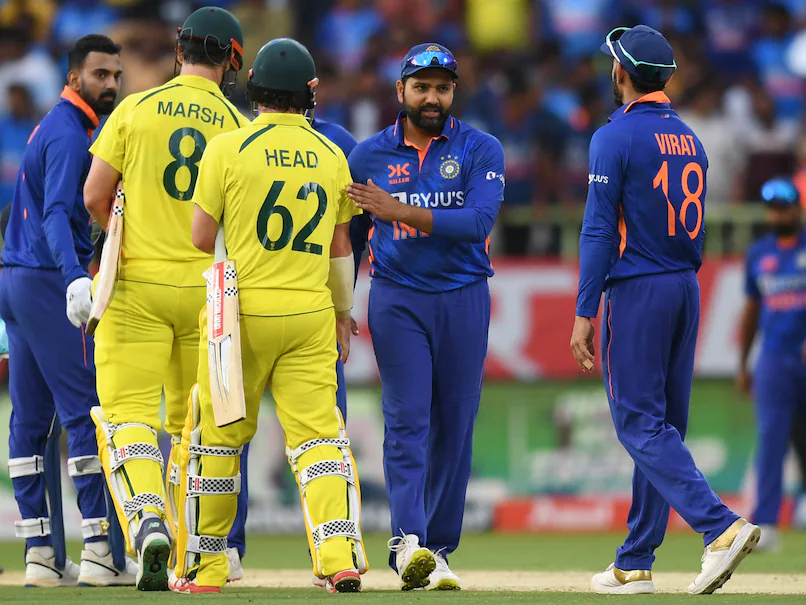Cricket, often dubbed a religion in India, sees its most fervent contests when the India national cricket team faces off against the Australian men’s cricket team. This rivalry is storied and rich, with both teams having produced some of the most memorable moments in cricket history. Analyzing the match scorecard between these two cricketing giants offers insight into their strategies, performances, and the dynamics of the game.
Historical Context of India vs Australia Matches
Evolution of the Rivalry
The rivalry between the India national cricket team and the Australian men’s cricket team dates back to the early 20th century. Over the decades, it has evolved, reflecting the growing prowess of the Indian team and the consistent dominance of the Australians. Key series like the Border-Gavaskar Trophy have become iconic, showcasing the intensity and high stakes of these encounters.
Memorable Matches
Several matches between India and Australia have gone down in cricketing folklore. The 2001 Kolkata Test, where India pulled off a miraculous comeback, the 2008 Sydney Test marred by controversies, and the 2020-21 series where India defied the odds to win in Australia, are just a few examples of the epic battles between these two teams.
Analyzing a Match Scorecard
Understanding the Scorecard
A cricket match scorecard provides a comprehensive summary of the game. It includes details like individual player performances, partnerships, bowling figures, and other statistical data. For fans and analysts, the scorecard is a vital tool to dissect the game’s nuances and understand how the match unfolded.
Key Components of the Scorecard
- Batting Performance: Details of runs scored by each player, including boundaries and strike rates.
- Bowling Analysis: Figures representing wickets taken, economy rates, and overs bowled.
- Partnerships: Key stands between batsmen that can change the course of the game.
- Extras: Runs given away through no-balls, wides, etc., which can be crucial in tight matches.
- Fall of Wickets: The sequence in which wickets fell, providing insight into the pressure points during the innings.
Case Study: A Recent Match
First Innings: India Batting
In a recent encounter, the India national cricket team set a formidable total. The top order, led by Rohit Sharma and Virat Kohli, laid a solid foundation. Sharma’s aggressive approach and Kohli’s masterful strokes exemplified India’s batting depth. The middle order, with contributions from Ajinkya Rahane and Rishabh Pant, ensured a strong finish. The scorecard reflected a balanced effort with partnerships building at crucial junctures.
Australian Bowling Analysis
Australia’s bowlers, known for their discipline and aggression, faced a challenging task. Pat Cummins and Josh Hazlewood were the standout performers, using their pace and accuracy to trouble the Indian batsmen. The spin duo of Nathan Lyon and Ashton Agar provided crucial breakthroughs in the middle overs. Despite their efforts, India’s scorecard showed a commanding total, thanks to the resilience of their batsmen.
Second Innings: Australia Batting
In response, the Australian men’s cricket team showcased their batting prowess. David Warner’s explosive start and Steve Smith’s classical approach kept Australia in the hunt. Marnus Labuschagne’s steady innings added stability. However, India’s bowlers, led by Jasprit Bumrah and Ravichandran Ashwin, applied relentless pressure. The scorecard highlighted key moments where wickets fell at regular intervals, ultimately restricting Australia to a competitive but achievable target.
India’s Bowling Performance
India’s bowling attack was both incisive and economical. Bumrah’s pace and yorkers, coupled with Ashwin’s spin and variations, created continuous pressure. The all-round performance of Shardul Thakur and the guile of Mohammed Siraj contributed significantly. The scorecard displayed a well-rounded bowling performance, ensuring India remained in a dominant position throughout the match.
FAQs
What is the importance of a match scorecard in cricket?
A match scorecard is crucial as it provides a detailed breakdown of the game, including individual performances, key partnerships, and bowling analysis. It helps fans and analysts understand the progression and key moments of the match.
How do partnerships impact the outcome of a match?
Partnerships are vital as they build the team’s score and often shift momentum. Strong partnerships can demoralize the opposition and set a platform for a high total or a successful chase.
Why is the India national cricket team vs Australian men’s cricket team match scorecard so significant?
The scorecard of a match between these two teams is significant due to the high stakes and intense rivalry. It reflects the strategies and performances that define the outcome of some of the most competitive and exciting cricket matches.
How do bowlers impact the game’s dynamics according to the scorecard?
Bowlers impact the game by taking wickets and controlling the run rate. The scorecard reveals their effectiveness through figures like wickets taken, economy rate, and the pressure they apply during crucial phases of the match.
What can fans learn from analyzing a match scorecard?
Fans can learn about the flow of the game, key performances, and turning points. It offers a detailed view of how individual contributions and team strategies played out during the match.
Conclusion
India National Cricket Team vs Australian Men’s Cricket Team Match Scorecard of encounters between the India national cricket team and the Australian men’s cricket team provides a rich tapestry of cricketing brilliance, strategic depth, and high-octane competition. It is a testament to the enduring rivalry and the excellence both teams bring to the sport. Whether you are a passionate fan or a keen analyst, diving into the scorecard offers a profound understanding of the game’s intricacies and the exceptional talents on display.


